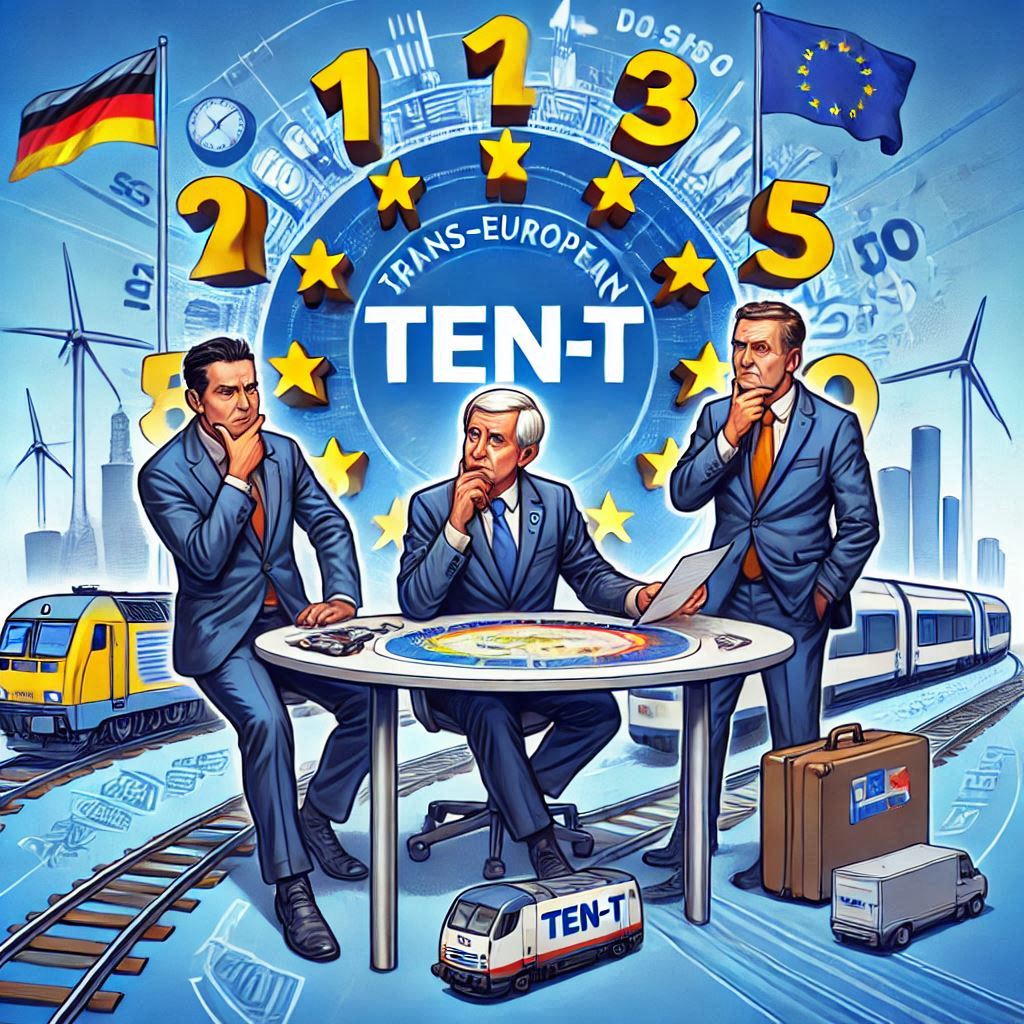Trans-European transport network (TEN-T) - what is it?
The TEN-T network is a key component of the European Union's transport infrastructure. It is a comprehensive system of transport links that is fundamental to the development of the single European market and the EU's economic cohesion.
View our transportation services
What is the TEN-T network?
The Trans-European Transport Network (TEN-T) is an infrastructure project involving all EU member states. A regulation of the European Parliament and the Council lays down guidelines for the development of the trans-European transport network, which connects the continent's major transportation hubs.

TEN-T infrastructure
The TEN-T network includes a variety of transportation infrastructure:
- Rail corridors
- Road infrastructure
- Sea and inland ports
- Multimodal nodes
- Traffic management systems
Check out our logistics solutions
Development of the transport network
The European Commission is working with member states to eliminate bottlenecks in Europe's transportation network. An expanded core network is scheduled to be completed by 2040, which is crucial for mobility in the EU.
Financing of TEN-T projects
The development of the Trans-European Transport Network requires significant investment:
- TEN-T funding
- EU budget funds
- Support from national programs
- Private investment
External sources:
Benefits of the TEN-T network
The expansion of TEN-T transportation infrastructure brings numerous benefits:
- Improving economic cohesion
- Increasing mobility
- Development of multimodal transport
- Sustainable development of the transport sector
The future of the TEN-T network
The TEN-T network is constantly evolving, taking into account new challenges and needs:
- Digitization of infrastructure
- Development of low-emission transport
- Integration of different forms of transport
- Improving cross-border connections
TEN-T is a key project for the future of European transportation, supporting the development of a sustainable and efficient network of connections across the European Union.
Q: What is the TEN-T trans-European transportation network?
A: The Trans-European Transport Network (TEN-T) is the European Union's comprehensive transport system, which aims to improve transport links in Europe, whether by road, rail, sea or air.
Q: What are the goals of the development of the Trans-European Transport Network?
A: The goals of developing the Trans-European Transport Network include increasing the efficiency of freight transport, improving regional accessibility, reducing congestion, and supporting sustainable development by promoting multimodal transport.
Q: What are the main elements of the trans-European network?
A: The main elements of the Trans-European Network are transport corridors, terminals, road and rail infrastructure, as well as maritime and air links, which ensure the smooth flow of goods and people between member countries.
Q: What are the key guidelines for the TEN-T budget?
A: Key guidelines for the TEN-T budget include the allocation of funds for infrastructure projects to address missing links in the network and support for projects with a total value in line with EU priorities.
Q: What changes does the 2024 revision of the Trans-European Network envision?
A: The revision of the Trans-European Network, scheduled for June 13, 2024, aims to update existing transport corridors and introduce new projects that respond to current transport needs in Europe.
Q: What are the benefits of the agreement on the development of the Trans-European Transport Network?
A: The benefits of the agreement on the development of the Trans-European Transport Network include improving the competitiveness of European freight transport, enhancing transportation safety, and minimizing environmental impact by promoting more sustainable transportation methods.
Q: What TEN-T projects are being implemented in Poland?
A: Various TEN-T projects are being implemented in Poland, which focus on the construction and modernization of transportation infrastructure, including roads, railroads and terminals, to improve the efficiency of freight and passenger transportation.
Q: What institutions are responsible for the development of the trans-European network in Poland?
A: The Ministry of Infrastructure in Poland is the main institution responsible for coordinating activities related to the development of the trans-European transport network, working with other agencies and EU institutions to effectively implement projects.
Q: What are the future directions of the trans-European transport network?
A: Future directions for the trans-European transport network include increasing the integration of multimodal transportation, developing new technologies in transportation, and improving access to the network for Europe's less developed regions.







